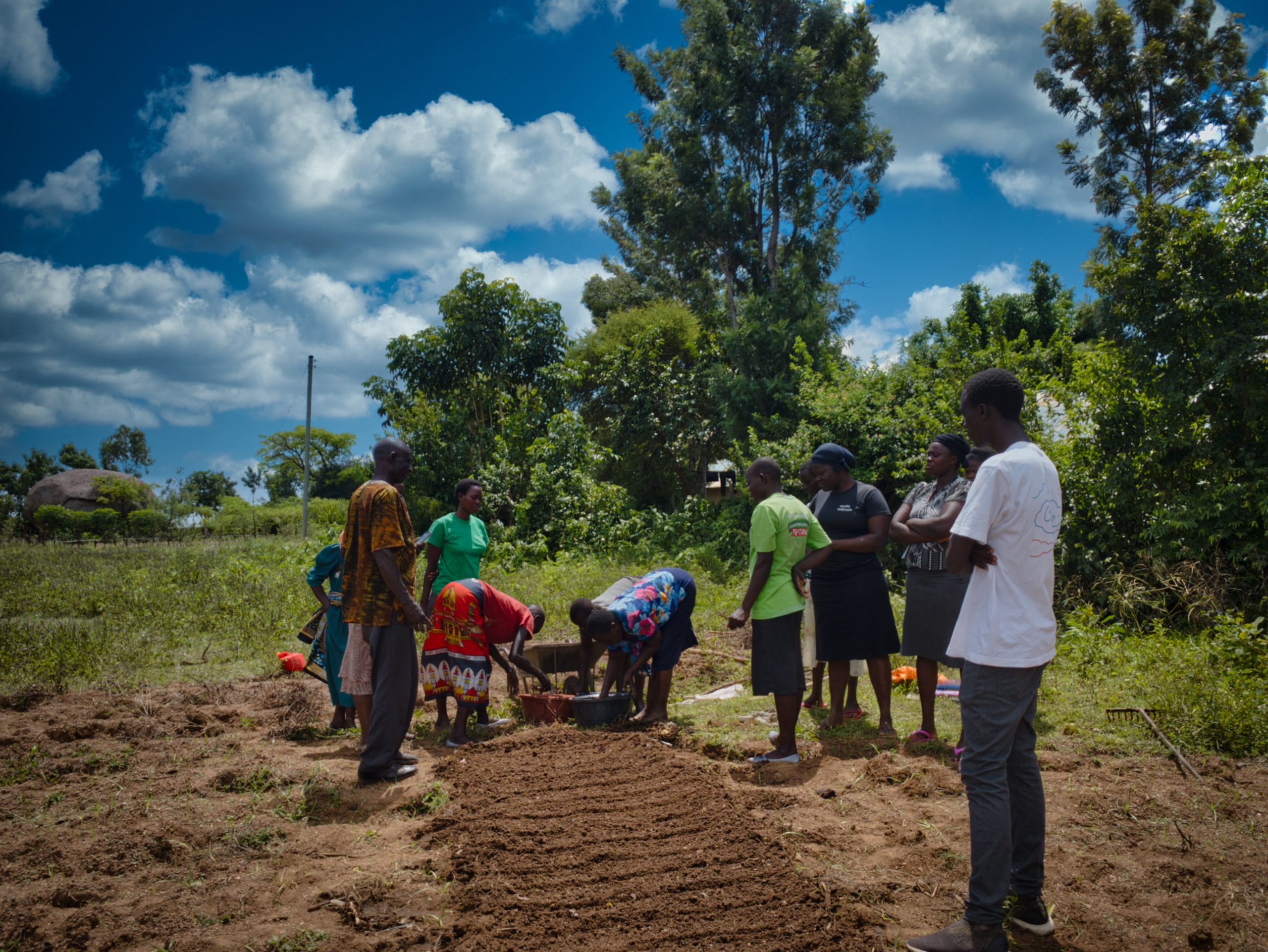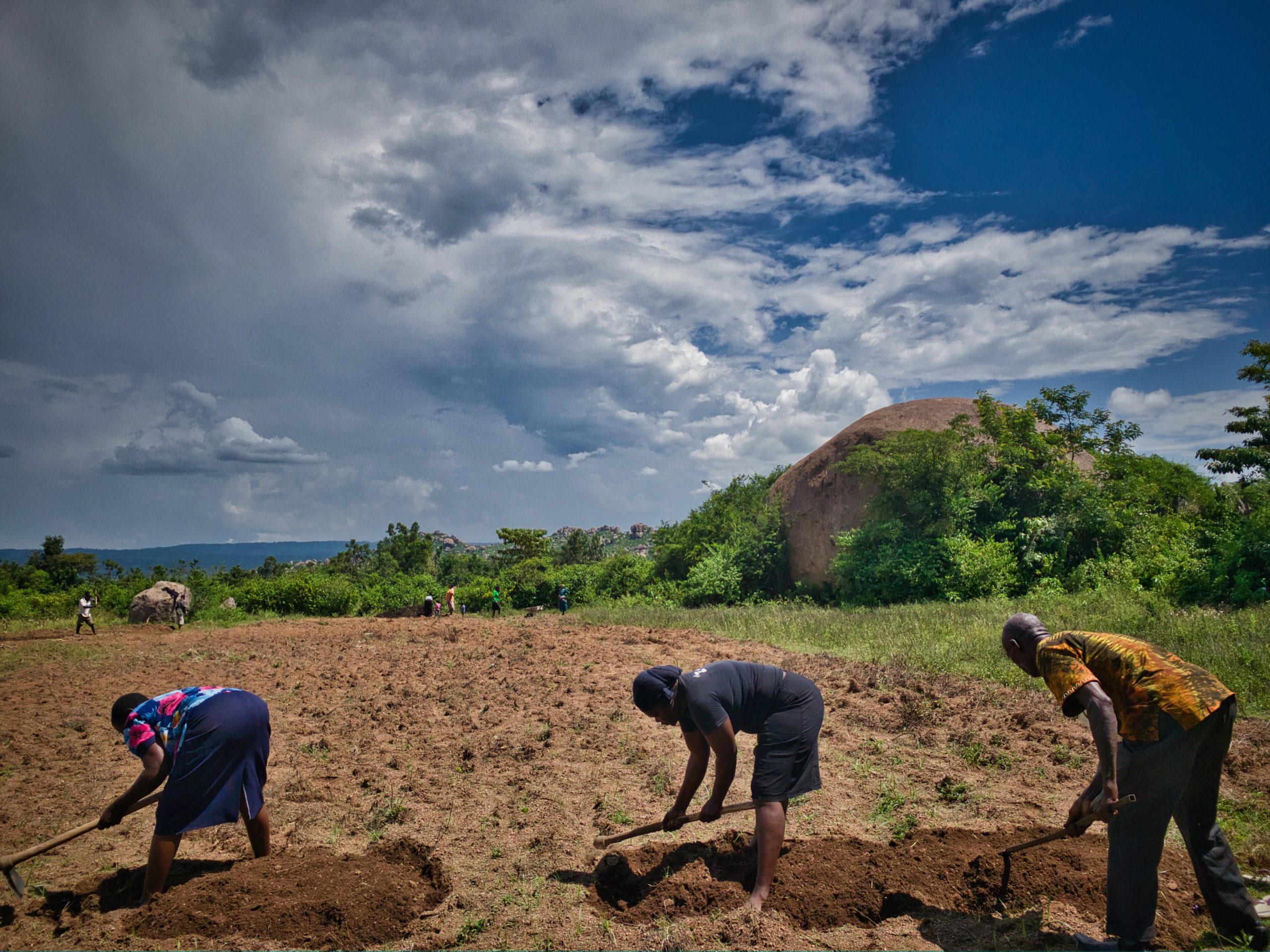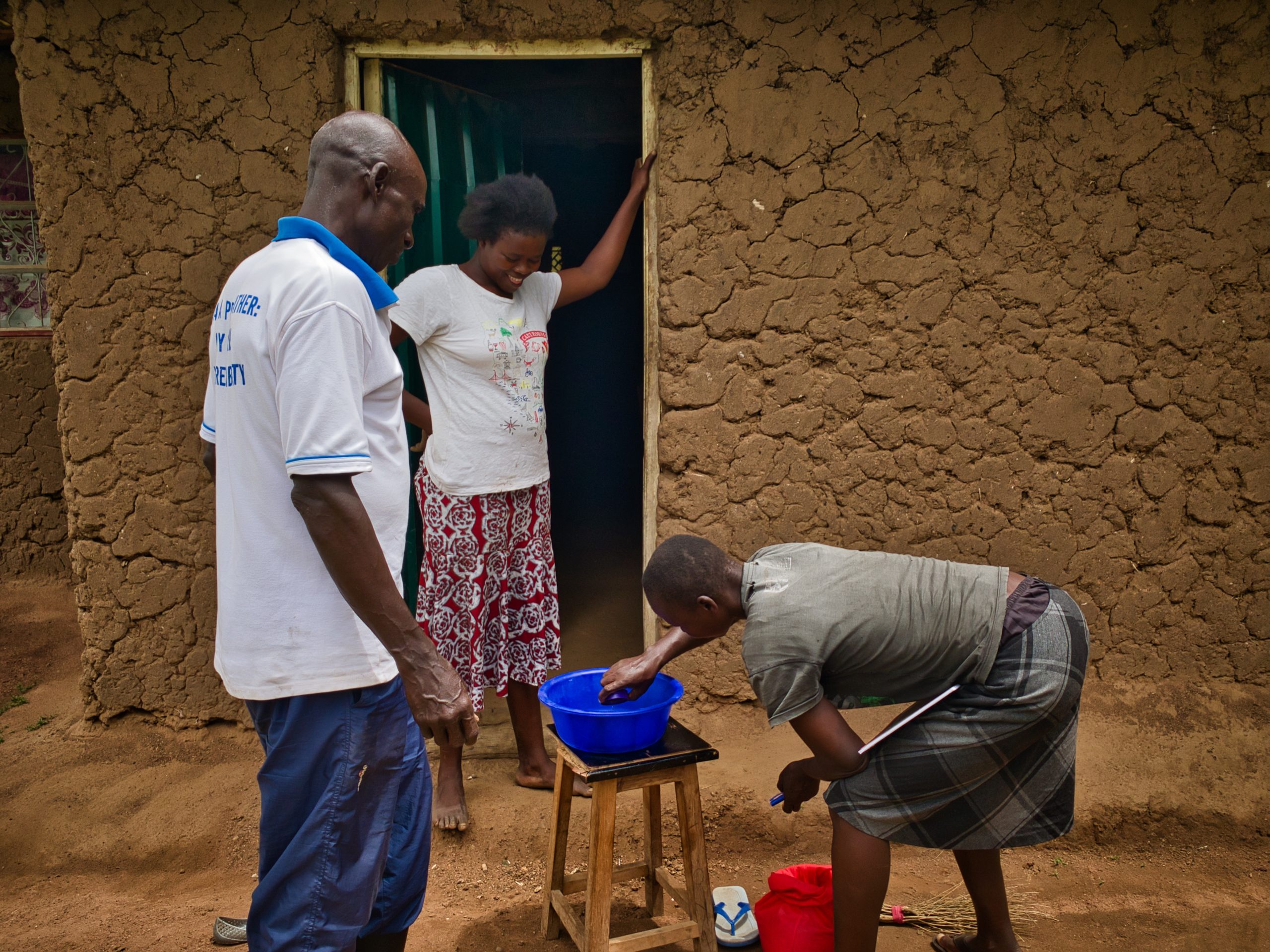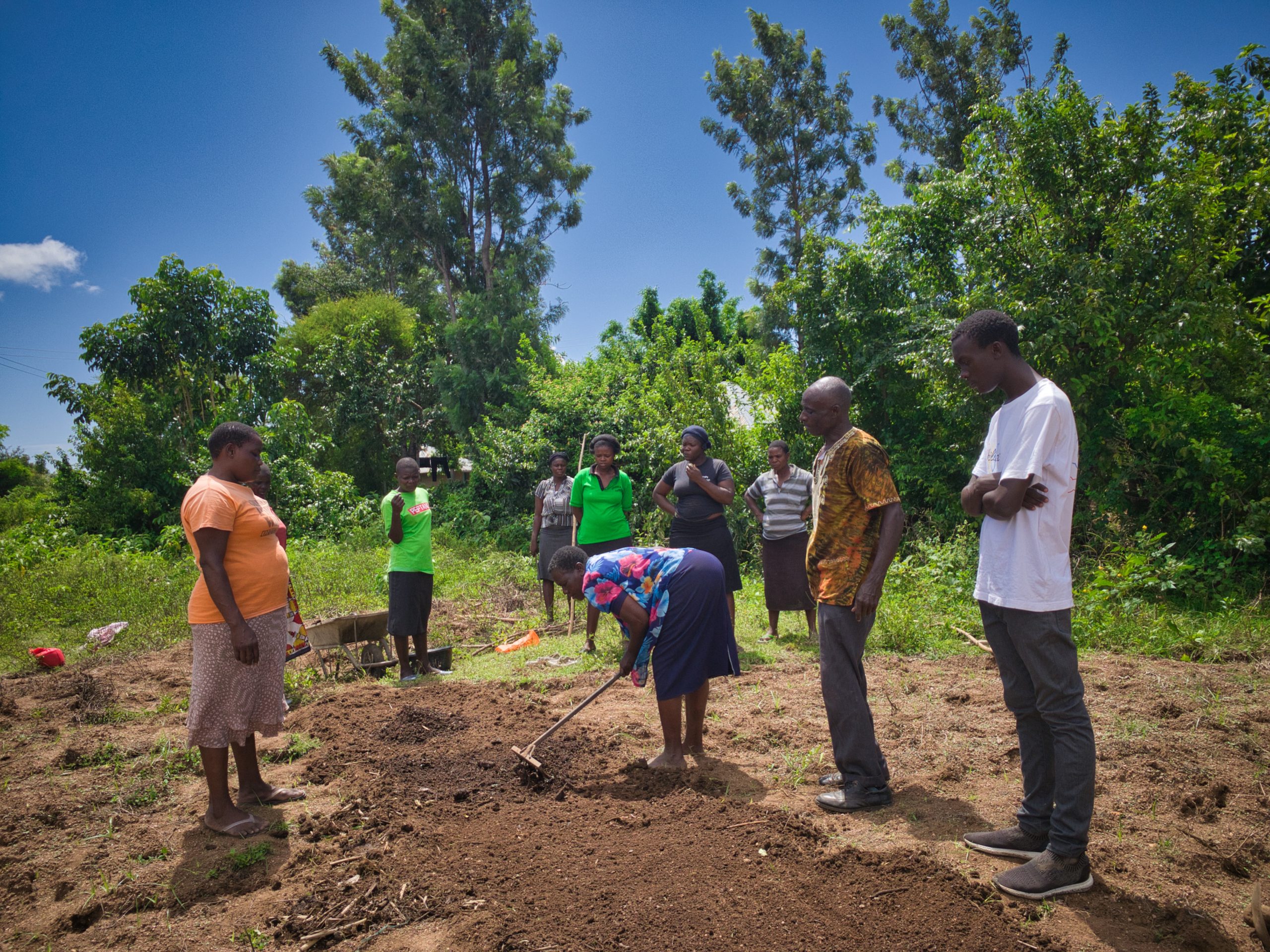Constance’s roots in the community and the network she has built in Seme sub-County, where we are conducting the pilot, have been key to the incredible progress we have made in such a short time. Through her network and the work she has done here, SANGO-Kenya has really hit the ground running. She has connected to so many people and so many people have connected with her. As a result, we have a great team, further demonstrated by how much we achieved in the last week.

To begin, Dominick, our agriculture expert and trainer, the Lead Farmers, the Community Health Workers, and I visited all 22 farms to assess how large their farms are and the best place for planting. Dominick also discussed each farmer’s access to manure. A key part of the sustainable agriculture practices SANGO-Kenya is advocating is using organic methods to provide and maintain soil health and nutrients. Dominick is also training them in compost making, but they don’t have time to make compost for this season.
Fortunately, all the farmers either have manure or have access through family or neighbors. Learning the proper use of manure was another need the farmers identified last summer. So, at every farm, Dominick looked for manure, told them where to place it, how to let it age properly so it would be most effective for land preparation. It was interesting watching him dart here and there, his eyes always looking for indications regarding whether or not a certain spot would work.
A few days later, we met at the demonstration plot. One of the farmers is allowing the group to use part of her land as a shared demo plot, both so Dominick can – show the farmers every step – preparing the land, “mulching” (not the mulch we think of; rather they gather dried materials and place on top of the prepared land to keep the moisture in), and eventually planting. He and the farmers worked side by side, so everyone received hands on experience.

Most urgent was preparation for African Nightshade, a nutritious traditional green, because it must be germinated before planting. Two days later – yesterday – we visited all of the farms again to see the farmers’ progress, especially the area for germinating the African Nightshade. Every farm that was prepared would receive the African Nightshade seeds.
Even though it had only been two days, all of the farmers had prepared the land or were receiving help to prepare – a few are elderly, a couple had been sick or had sick family members. Everyone received their seeds and the Lead Farmers will go see each member of their group on Saturday to make sure they have planted properly.

I was so impressed with the Lead Farmers. As mentioned, several members of Ogenda Women’s Group are elderly. One of the Lead Farmers – who has her own children, farm, small business, and other duties – had gone around and helped the older farmers prepare their land. Some of the farmers had questions, and before Dominick could explain, the Lead Farmers were explaining – in detail – exactly how to prepare the land and plant the seeds.
One of SANGO-Kenya’s goals is empowering the women with whom we are working through knowledge and improving their economic situations. The Lead Farmers are already demonstrating how quickly they absorb information and what strong leaders they are – they take charge, they absorb information quickly, and help each other and their communities.


Once again, the photographs are gorgeous…is the sky always so clear?
Everyone is working so hard; we hope that the rains come at the right time this year!
I am curious about the large, roughly elephant shaped brown shapes in the landscape…..Are they houses? Grain storage buildings?
They’re very sculptural. Beautiful.
Hi Linda, Thanks so much for your continued support!
The skies change all the time — the other day, they were perfectly blue, not a cloud. And then the winds came up and the sky was overcast. But only a few drops of rain. We are really hoping the rains will come at the right time and enough. Also hoping against the locusts.
Those brown shapes are boulders — they are randomly strewn around. The largest grouping is called Kit Mikayi https://macleki.org/stories/the-many-uses-of-kit-mikayi/), but you see them all around here. They are quite spectacular.
Most impressive and inspiring work, dear Kit!
I have a sense that this work will be sprouting many fruits.
My best wishes for the community.
Looking forward to talking about it!
Hugs,
Margot
Thank you so much, Margot. So appreciate your support. xxKit